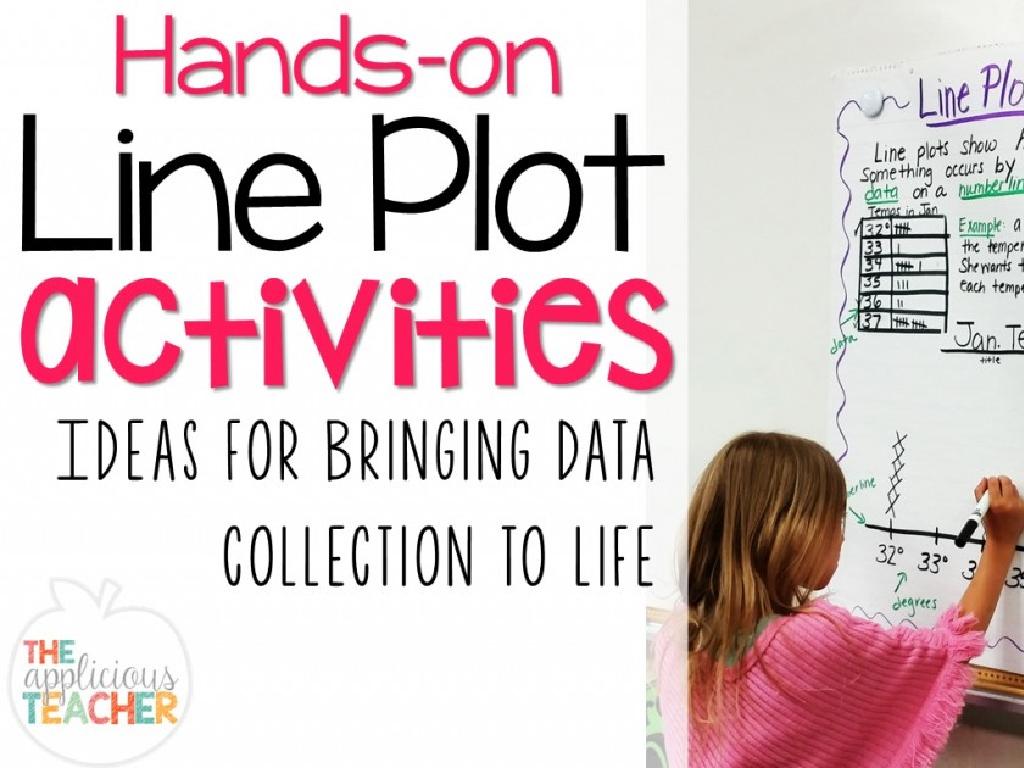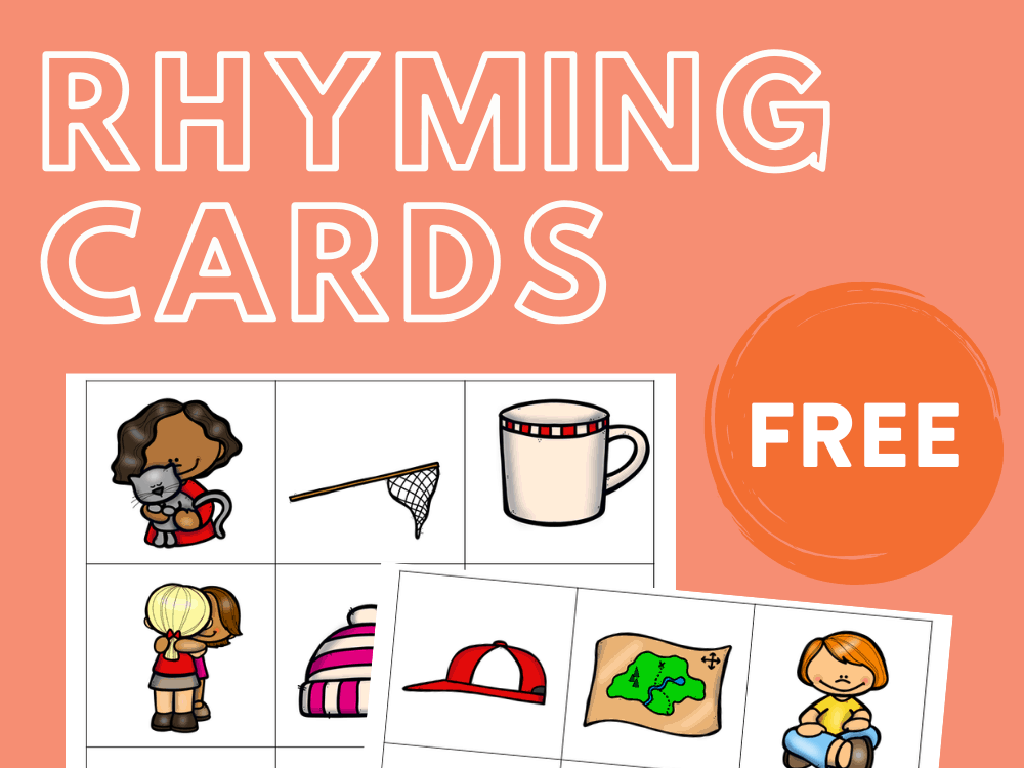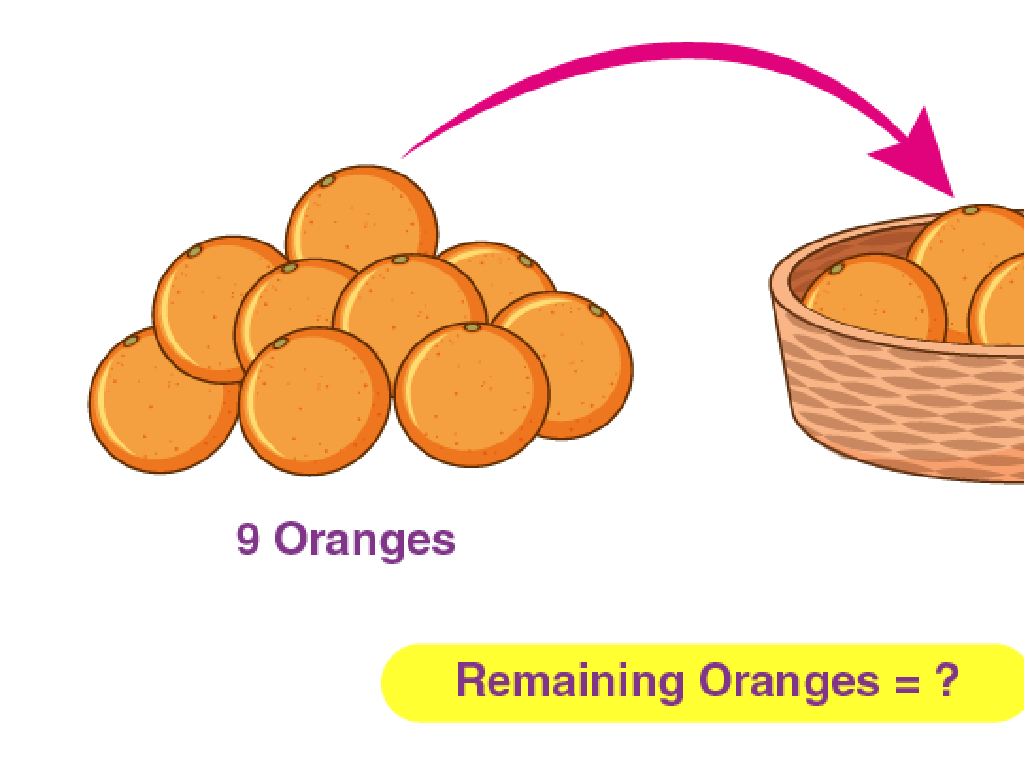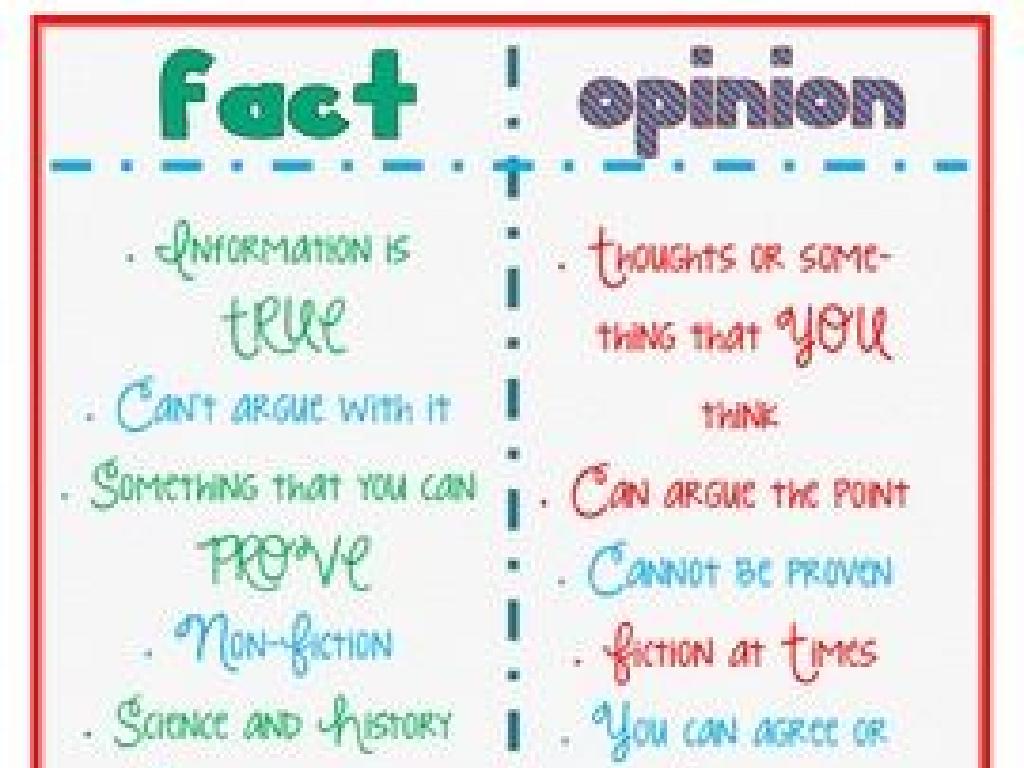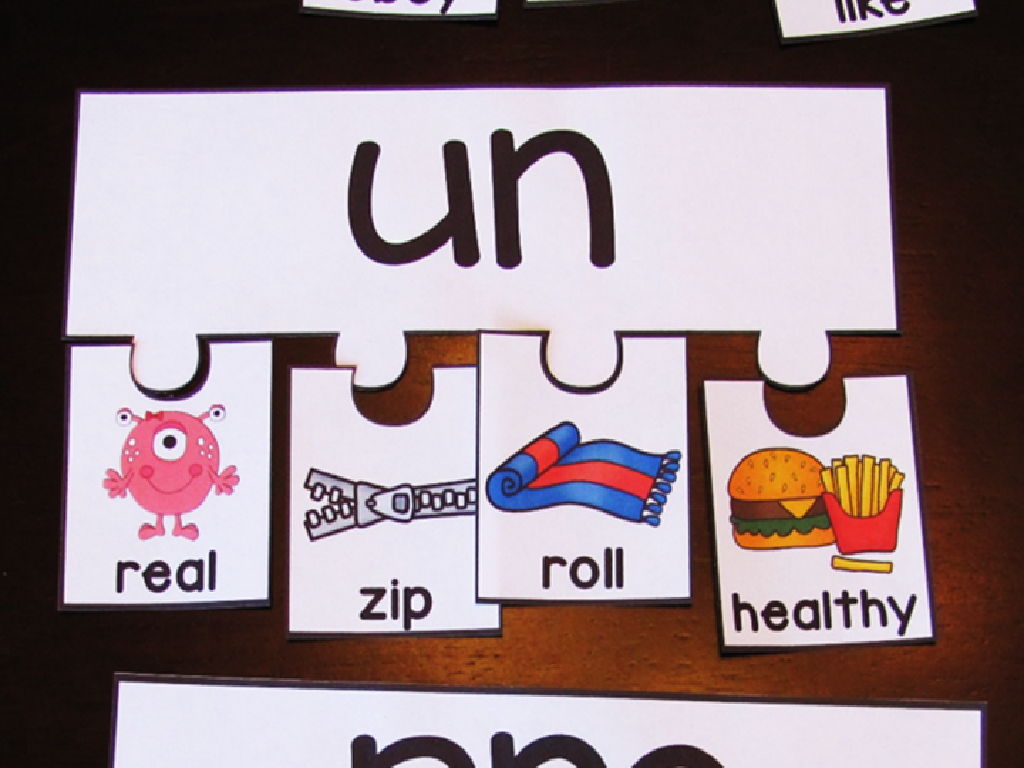Elapsed Time
Subject: Math
Grade: Fourth grade
Topic: Time
Please LOG IN to download the presentation. Access is available to registered users only.
View More Content
Understanding Time and Its Importance
– What exactly is time?
– Time is a way to measure moments.
– The importance of time
– Helps us organize and plan our day.
– Measuring time in various ways
– Using clocks, watches, and calendars.
– Time in our daily lives
– Schedules, school, cooking, and more.
|
This slide introduces the concept of time to fourth graders, aiming to help them understand what time is and why it’s a crucial part of our lives. Begin by explaining that time is a continuous sequence of events that occur in an irreversible succession. Discuss how time helps us structure our day, from knowing when to wake up, to scheduling school subjects, to planning playtime. Highlight different tools we use to measure time, such as clocks for hours and minutes, calendars for days, weeks, and months, and timers for shorter durations. Emphasize the relevance of time in everyday activities like cooking (e.g., baking a cake for 30 minutes) or TV schedules. Encourage students to think of examples where they have to use time management in their daily routines.
Clocks and Time: Understanding Time
– Types of clocks: Analog and Digital
– Analog has hands, digital shows numbers
– Parts of a clock: Hour, Minute, Second hands
– Hour hand is short, minute is longer, second is thinnest and fastest
– How to read time on clocks
– Look where the hands point or read the numbers
– Practice reading different clocks
|
This slide introduces students to the concept of time, focusing on the two main types of clocks: analog and digital. Analog clocks have moving hands that point to numbers on a dial, while digital clocks display time with numbers. It’s important to explain the function of each hand on the clock: the hour hand shows the hour, the minute hand shows how many minutes past the hour, and the second hand counts the seconds. Teach students how to read the time by looking at the position of the hands on an analog clock or by reading the numbers on a digital clock. Include practice exercises where students can apply their knowledge by reading the time from various clocks. This will help solidify their understanding of time measurement.
Understanding Elapsed Time
– What is elapsed time?
– The time that passes from the start to the end of an event.
– Importance of elapsed time
– Helps manage daily activities and schedules.
– Real-life elapsed time examples
– Figuring out duration of trips, cooking, or between classes.
– Calculating elapsed time
– Use clocks or timelines to find the difference between start and end times.
|
Elapsed time is a key concept in time management and is essential for students to understand for practical daily life. It’s the difference between a starting time and an ending time. Knowing how to calculate elapsed time helps students in planning and organizing their activities, such as determining how long a homework assignment takes or how much time is left before bedtime. In this lesson, we’ll explore real-life situations where calculating elapsed time is necessary, such as understanding how long a road trip takes or how long to bake cookies. We’ll practice using clocks and timelines to calculate elapsed time, reinforcing these skills with examples and exercises.
Calculating Elapsed Time
– Finding start and end time
– Identify when an event begins and finishes
– Counting hours and minutes passed
– Add up the total time from start to finish
– Visualizing with a number line
– Draw a timeline to see the time intervals
– Practice with real-life scenarios
– Use examples like duration of a school day
|
This slide introduces students to the concept of elapsed time, which is the amount of time that passes from the start of an event to its end. Teach students to look at the clock and note the start and end times of activities. Explain how to count the total hours and minutes that have passed, which can be done by adding up the time intervals. Introduce a number line as a visual aid to help students better understand the concept of elapsed time. Provide real-life scenarios, such as the length of a school day or time spent on homework, to give students practical examples to work with. Encourage students to practice these skills with classroom activities and at home to reinforce their understanding.
Calculating Elapsed Time
– Example 1: School Day Duration
– From 8:00 AM to 3:00 PM, how many hours?
– Example 2: Movie Ending Time
– If a movie starts at 6:15 PM, when will it end after 1 hour and 45 minutes?
– Steps to calculate elapsed time
– Identify start time, add duration, find end time
– Practice with class examples
|
This slide is designed to help students understand the concept of elapsed time through practical examples. Start by explaining that elapsed time is the amount of time that passes from the start of an event to its end. Work through the first example by counting the hours from 8:00 AM to 3:00 PM. For the second example, show how to add the movie’s duration to the start time to find the end time. Encourage students to use clocks or number lines if they help visualize the time passing. After explaining the examples, engage the class in solving similar problems to reinforce the concept. Provide guidance and support as they work through the steps of calculating elapsed time.
Calculating Elapsed Time
– Homework duration calculation
Start: 4:30 PM, End: 5:15 PM. How long did it take?
– Soccer game length determination
Start: 9:00 AM, End: 10:30 AM. Duration of the game?
– Solve with step-by-step guidance
– Practice makes perfect!
|
This slide presents two practice problems for students to apply their knowledge of calculating elapsed time. For the first problem, guide students to note the start and end times, then count the minutes from the start time to the next hour, and add the remaining minutes to the end time. For the second problem, students should recognize that the game spans over an hour and calculate the additional minutes. Encourage students to use clocks, number lines, or T-charts as visual aids to solve these problems. Provide step-by-step guidance and ensure they understand the concept of elapsed time. Offer additional practice problems for students who finish early or need more practice.
Class Activity: Elapsed Time Race
– Pair up for elapsed time problems
– Receive start and end times
– Calculate the elapsed time
– Use subtraction or a number line to find the difference
– First to finish wins a prize
|
In this engaging class activity, students will work in pairs to strengthen their understanding of elapsed time. Distribute a set of problems to each pair with various start and end times. Students should use strategies such as counting forward, using subtraction, or drawing a number line to calculate the elapsed time between the given times. Monitor the pairs for correct calculations and understanding of the concept. The first pair to correctly solve all their problems will be rewarded with a small prize. This activity promotes teamwork, quick thinking, and practical application of elapsed time concepts. Possible variations for different pairs could include using digital vs. analog clocks, word problems, or real-life scenarios like bus schedules or cooking times.
Wrapping Up: Elapsed Time
– Recap: Why Elapsed Time Matters
– It helps us manage our daily activities efficiently.
– Review Steps for Elapsed Time
– Start time to end time, count hours, then minutes.
– Q&A Session
– Practice Makes Perfect
– Keep practicing with clocks and schedules!
|
As we conclude, emphasize the practicality of understanding elapsed time in everyday life, such as knowing how long a task takes or how much time is left for play. Review the method of finding elapsed time by identifying the start and end times, then counting the hours and minutes that have passed. Encourage students to ask any lingering questions for clarification. Finally, stress the importance of practice by using real-life scenarios, such as TV show schedules or cooking times, to reinforce the concept.

